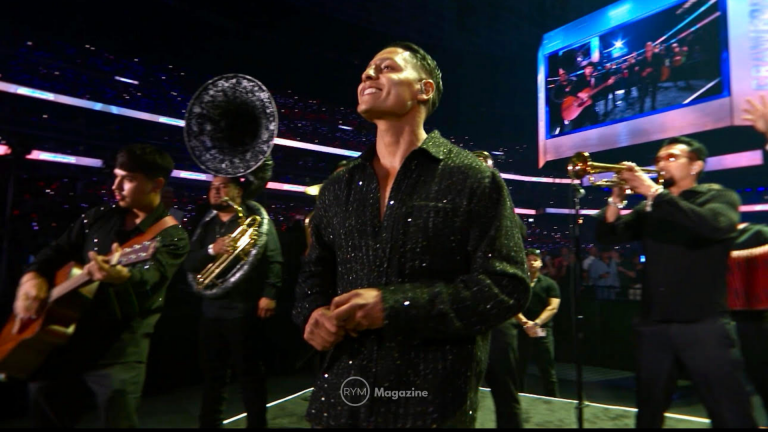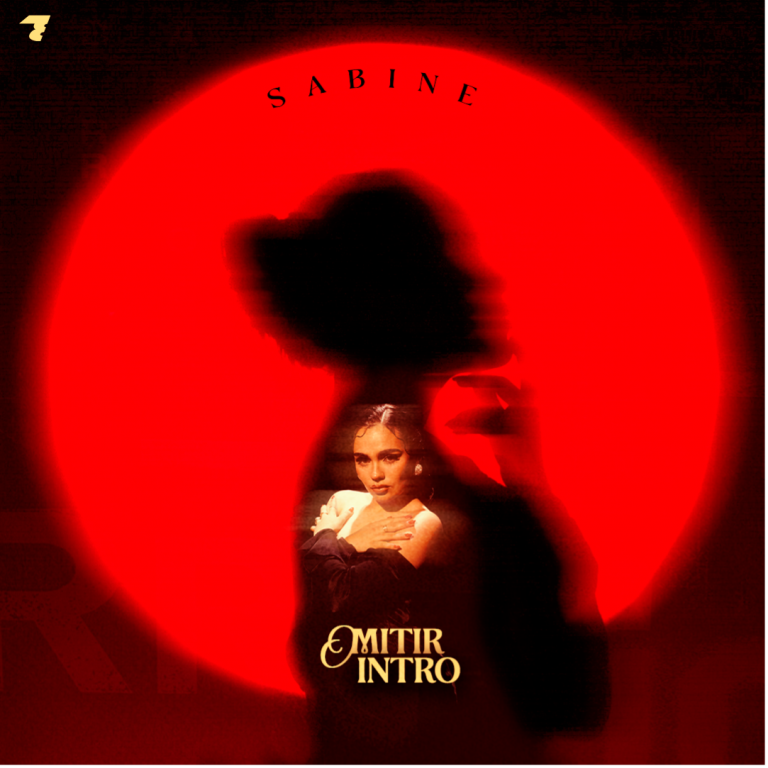
Have you ever found yourself humming a tune but couldn’t remember its name? You’re not alone! Many people experience this, and thankfully, technology has come to the rescue. Now, with just a few notes of your favorite melody, you can search for music by humming. This article dives into how you can harness this feature, along with tips and apps that make it easier. Let’s explore the world of music discovery through your own voice!
Key Takeaways
- Humming is a great way to identify songs when you can’t remember their titles.
- Several apps, like SoundHound and Google Assistant, allow you to search for music by humming.
- The accuracy of humming searches can improve with practice and the right environment.
- If humming isn’t working, consider using lyrics or music forums to find your song.
- The technology behind music recognition is evolving, making it easier to find tunes with just a few notes.
Understanding How To Search For Music By Humming

The Science Behind Humming
Ever wonder how a simple "hmm" can lead you to a specific song? It’s all about frequency and pattern recognition. When you hum, you’re essentially creating a simplified version of the song’s melody. Your voice produces a series of tones that apps can analyze. These tones, even if slightly off-key, contain enough information for algorithms to identify the underlying musical structure. It’s like a musical fingerprint!
How Humming Works in Music Recognition
Music recognition technology has come a long way. Here’s a simplified breakdown of how it works when you hum:
- Audio Input: The app records your humming.
- Frequency Analysis: It breaks down the audio into different frequencies.
- Pattern Matching: The app compares the pattern of frequencies to a database of songs.
- Result: It presents you with the most likely matches.
It’s important to remember that the accuracy depends on several factors, including the clarity of your humming and the complexity of the song. Some songs with unique melodies are easier to identify than others with common chord progressions. If you are looking for similar songs, you can try humming the tune.
Common Apps for Humming Searches
Several apps have integrated humming recognition technology. These apps offer a convenient way to identify songs stuck in your head. Here are a few popular options:
- SoundHound
- Google Assistant
- Shazam
These apps use sophisticated algorithms to analyze your humming and match it to songs in their databases. While they are not perfect, they offer a surprisingly effective way to discover music. The technology is constantly improving, so expect even more accurate results in the future.
Popular Apps That Allow You To Search For Music By Humming
So, you’ve got a tune stuck in your head, but can’t remember the name? Luckily, several apps have stepped up to help you identify songs just by humming a few bars. It’s pretty amazing how far technology has come! Let’s check out some of the most popular options.
SoundHound: Your Humming Companion
SoundHound is probably one of the best-known apps for music recognition, and it’s been around for a while. It’s really good at identifying songs, even if you’re not a perfect singer. You just hum or sing into your phone, and SoundHound will analyze the melody to find a match. It also lets you see lyrics, watch music videos, and explore other songs by the same artist. It’s a solid all-around choice for music discovery.
Google Assistant’s Humming Feature
Did you know that Google Assistant can also identify songs by humming? It’s super convenient because most Android phones already have Google Assistant built-in. Just activate the Assistant and say, "What’s this song?" or simply start humming. Google’s algorithms are pretty powerful, so it can often recognize songs even with less-than-perfect humming. Plus, it integrates seamlessly with other Google services, making it easy to add the identified song to your YouTube Music or Spotify playlist.
Shazam’s Humming Capabilities
Shazam is another big name in the music recognition game. While it’s famous for identifying songs playing in the background, it also has a humming feature. To use it, open the app and tap the Shazam button, then hum the tune. Shazam will then analyze your humming and try to find a match in its extensive database. It’s a reliable option, and it’s free to use. Plus, Shazam identifies songs quickly, even with background noise.
I’ve used all three of these apps at different times, and they’ve all been surprisingly accurate. It’s kind of mind-blowing how they can figure out a song just from a few hummed notes. It’s definitely a game-changer for music lovers!
Tips For Effective Humming Searches
Humming Techniques for Better Results
Okay, so you’re ready to search for music by humming, but you’re not getting the results you want? Don’t worry, it happens! It’s all about refining your technique. The clearer and more accurate your hum, the better the app can identify the song. Think of it like this: you’re giving the app a puzzle, and the better the pieces, the easier it is to solve.
Here are a few things to keep in mind:
- Maintain a steady pitch: Try not to waver too much. A consistent tone helps the app pinpoint the notes.
- Focus on the melody: The melody is the most important part. Don’t worry about getting the rhythm perfect, but nail those notes!
- Hum the most recognizable part: Usually, the chorus or the beginning of the song works best.
Choosing the Right Environment
Where you hum can actually make a difference. A quiet environment is ideal. Background noise can confuse the app and lead to inaccurate results. Imagine trying to have a conversation at a rock concert – it’s tough! The same goes for your humming search.
Consider these factors:
- Minimize background noise: Turn off the TV, radio, or any other distracting sounds.
- Find a quiet room: A small, enclosed space can help reduce echoes and reverberations.
- Speak clearly: Make sure the microphone on your device can clearly pick up your humming.
Avoiding Common Mistakes
There are a few common pitfalls that can sabotage your humming search. Knowing what not to do is just as important as knowing what to do.
Here’s a list of mistakes to avoid:
- Humming too quietly: The app needs to hear you! Make sure your humming is loud enough to be picked up by the microphone.
- Humming with background noise: As mentioned before, background noise can interfere with the app’s ability to identify the song.
- Humming the wrong part of the song: Focus on the most recognizable part, like the chorus or intro. Avoid humming instrumental sections or obscure verses.
It’s also worth noting that some apps are better than others at recognizing humming. If you’re not having luck with one app, try another. Experiment and see what works best for you. Don’t give up after the first try! Sometimes it takes a few attempts to get it right.
Exploring Alternatives To Humming For Music Discovery
Okay, so you’ve tried humming that tune stuck in your head, and the apps just aren’t getting it. Don’t worry, there are other ways to find that elusive song! Sometimes, humming just doesn’t cut it, especially if your humming skills aren’t exactly pitch-perfect. Let’s explore some alternative routes to music discovery.
Using Lyrics to Find Songs
This is probably the most straightforward alternative. If you remember even a few words from the song, you’re in business. Just type those lyrics into a search engine like Google or DuckDuckGo, and chances are, you’ll find the song title and artist pretty quickly. There are also websites specifically designed for finding songs by lyrics. These sites often have advanced search features that can help you narrow down your results, even if you only remember a fragment of the lyrics. It’s amazing how effective this method can be!
Searching by Melody or Beat
Okay, so you can’t remember the lyrics, and humming isn’t working. What about the melody or the beat? There are some interesting approaches here, though they might require a bit more effort. You could try describing the melody using musical terms (e.g., "starts with a descending scale") in a search engine. It’s a long shot, but sometimes it works! Another option is to use online tools that analyze music files. You could try to recreate the beat using a drum machine app or online sequencer, then use that to search for similar songs. This is definitely a more advanced technique, but it can be rewarding if you’re determined to find that song.
Leveraging Music Forums and Communities
Don’t underestimate the power of human knowledge! There are tons of online music forums and communities where people are passionate about music and love helping each other identify songs. Describe the song as best you can – the genre, the instruments used, any details you remember about the music video, or where you might have heard it. Post your query on a relevant forum, and chances are, someone will recognize the song and be able to tell you what it is. Sites dedicated to similar songs can also be a great resource.
I once spent weeks trying to find a song I’d heard in a coffee shop. I tried humming, searching lyrics, everything! Finally, I posted a description on a music forum, and within an hour, someone identified it. It turned out to be a relatively obscure indie track, but someone knew it! The power of community is real.
The Future of Music Discovery Through Humming
Advancements in AI and Music Recognition
The future of music discovery through humming is looking pretty cool, mostly because of improvements in AI. AI is getting way better at understanding what we’re humming, even if we’re not perfect singers. This means apps can find songs faster and more accurately. It’s not just about matching notes anymore; AI can now recognize rhythms, styles, and even the vibe of a tune. This will make query by humming much more reliable.
Potential New Features in Music Apps
Music apps are likely to get some interesting new features thanks to humming tech. Imagine:
- Being able to hum a song and instantly create a playlist of similar tracks.
- Humming a tune to find different versions or covers of the same song.
- Using humming to identify background music in videos or movies.
These features could really change how we interact with music, making it easier to find new stuff and rediscover old favorites. It’s all about making music discovery more intuitive and fun.
The Role of User Feedback in Development
User feedback is super important for making humming-based music discovery even better. App developers need to know what works and what doesn’t. This includes:
- Collecting data on successful and unsuccessful searches.
- Asking users for feedback on the accuracy of results.
- Using this information to improve the AI and algorithms behind the humming recognition tech.
With enough feedback, these apps can become way more effective at helping us find the music we’re looking for. It’s a collaborative process that benefits everyone.
Real-Life Success Stories of Humming Searches

Famous Songs Found by Humming
It’s actually pretty amazing how many people have successfully identified songs just by humming a few bars. These apps have become a go-to for those moments when a tune is stuck in your head, but you can’t quite place it. Think about it: you’re at a store, a song plays, and you only catch a snippet. Instead of wondering forever, you can just hum it into your phone and bam, the mystery is solved. There are some pretty famous examples out there. I remember reading about someone who found a relatively obscure jazz track they’d heard years ago, all thanks to humming. It’s not always perfect, but the success rate is surprisingly high, especially with popular songs.
User Testimonials and Experiences
People are constantly sharing their experiences with humming-based music search, and it’s cool to see how it impacts their lives. You see posts all over social media about it. Here are some common themes:
- Rediscovering Lost Favorites: Many users talk about finding songs they’d completely forgotten about, sparking a wave of nostalgia.
- Identifying Background Music: As mentioned above, a lot of people use it to identify songs playing in public places, like stores or restaurants.
- Settling Musical Debates: It’s a fun way to resolve arguments with friends about song titles or artists.
I once used a humming app to find a song that had been driving me crazy for weeks. I only remembered a small part of the melody, but the app nailed it. It was such a relief! Now, I use it all the time to discover new music and identify old favorites. It’s like having a musical encyclopedia in my pocket.
How Humming Changed Music Discovery
Humming has really changed how we find new music. Before, if you didn’t know the artist or title, you were pretty much out of luck. Now, you have a tool that lets you search based on melody alone. This has a few big implications:
- Democratization of Music Discovery: Anyone can find a song, regardless of their musical knowledge.
- Increased Exposure for Obscure Artists: Even if a song isn’t popular, it can still be identified through humming.
- New Avenues for Music Education: Humming can be used to learn about music theory and melody recognition. For example, you can submit similar songs you find to online communities to help others discover new music.
It’s not just about finding songs you already know; it’s about discovering new ones and expanding your musical horizons. It’s a pretty cool development, and I’m excited to see where it goes from here.
Integrating Humming Into Your Music Experience
Creating Playlists Based on Hummed Tunes
Okay, so you’ve discovered the magic of finding songs by humming. Now what? Let’s talk about turning those hummed discoveries into something more useful, like playlists. Imagine creating entire playlists based on those earworms you can never quite name!
Here’s how I usually do it:
- First, hum the song and identify it using an app like SoundHound Music Discovery.
- Next, add the identified song to a new playlist on your preferred music streaming service (Spotify, Apple Music, etc.).
- Repeat the process for all those tunes stuck in your head.
- Finally, give your playlist a cool name. I usually go for something descriptive, like "Hummed Hits" or "Melody Mayhem."
It’s actually pretty cool to see how your musical tastes translate into a playlist created entirely from memory. You might be surprised by the connections you find between songs you didn’t even realize were related in your mind.
Collaborating with Friends on Music Discovery
Music is always better when shared, right? Humming-based music discovery can be a fun way to collaborate with friends. Think of it as a musical game of charades, but with humming!
Here’s how you can get your friends involved:
- Hum a tune to your friend and see if they can guess it.
- If they can’t, use a music recognition app to identify the song.
- Add the song to a shared playlist.
- Take turns humming and guessing.
This is a great way to discover new music together and bond over shared (or not-so-shared) musical tastes. Plus, it’s way more interactive than just sending each other links to songs.
Using Humming for Music Education
Humming can actually be a surprisingly useful tool for music education. Whether you’re a student learning music theory or just someone who wants to improve their musical ear, humming can help.
Here are a few ways to use humming for music education:
- Ear Training: Try humming intervals or melodies and then checking your accuracy with a piano or other instrument. This can help you develop your sense of pitch and melody.
- Music Theory: Use humming to internalize scales and chords. For example, hum the notes of a C major scale or a G major chord.
- Songwriting: Humming can be a great way to come up with new musical ideas. Try humming different melodies and rhythms until you find something you like. Then, develop that idea into a full song.
Humming is a simple, accessible way to engage with music on a deeper level. It’s something anyone can do, regardless of their musical background. So, give it a try and see what you discover!
Wrapping It Up
So there you have it! Humming your favorite tune can really open up a world of music discovery. It’s pretty cool how technology can help us find songs just by a few notes. Whether you’re trying to recall that catchy chorus or just want to explore new tracks, apps like SoundHound and Google Assistant make it easy. Next time you find yourself humming a tune, don’t hesitate to give it a try. You might just stumble upon your new favorite song or artist. Happy humming!
Frequently Asked Questions
Can I really find a song just by humming it?
Yes! Many apps are designed to recognize tunes from your humming and can help you find the song you’re looking for.
What apps can I use to search for music by humming?
Some popular apps include SoundHound, Google Assistant, and Shazam. Each of these has a feature that allows you to hum a tune to find songs.
How accurate are these humming recognition apps?
The accuracy can vary, but many users report good results, especially for well-known songs.
Do I need to be a good singer to use these apps?
Not at all! You don’t need to sing perfectly. Just hum the melody as best as you can.
Can I use these apps offline?
Most music recognition apps require an internet connection to search their databases, so it’s best to use them online.
What if the app doesn’t recognize my humming?
If the app doesn’t find the song, try humming it again or add more details about the song, like lyrics or the artist.





